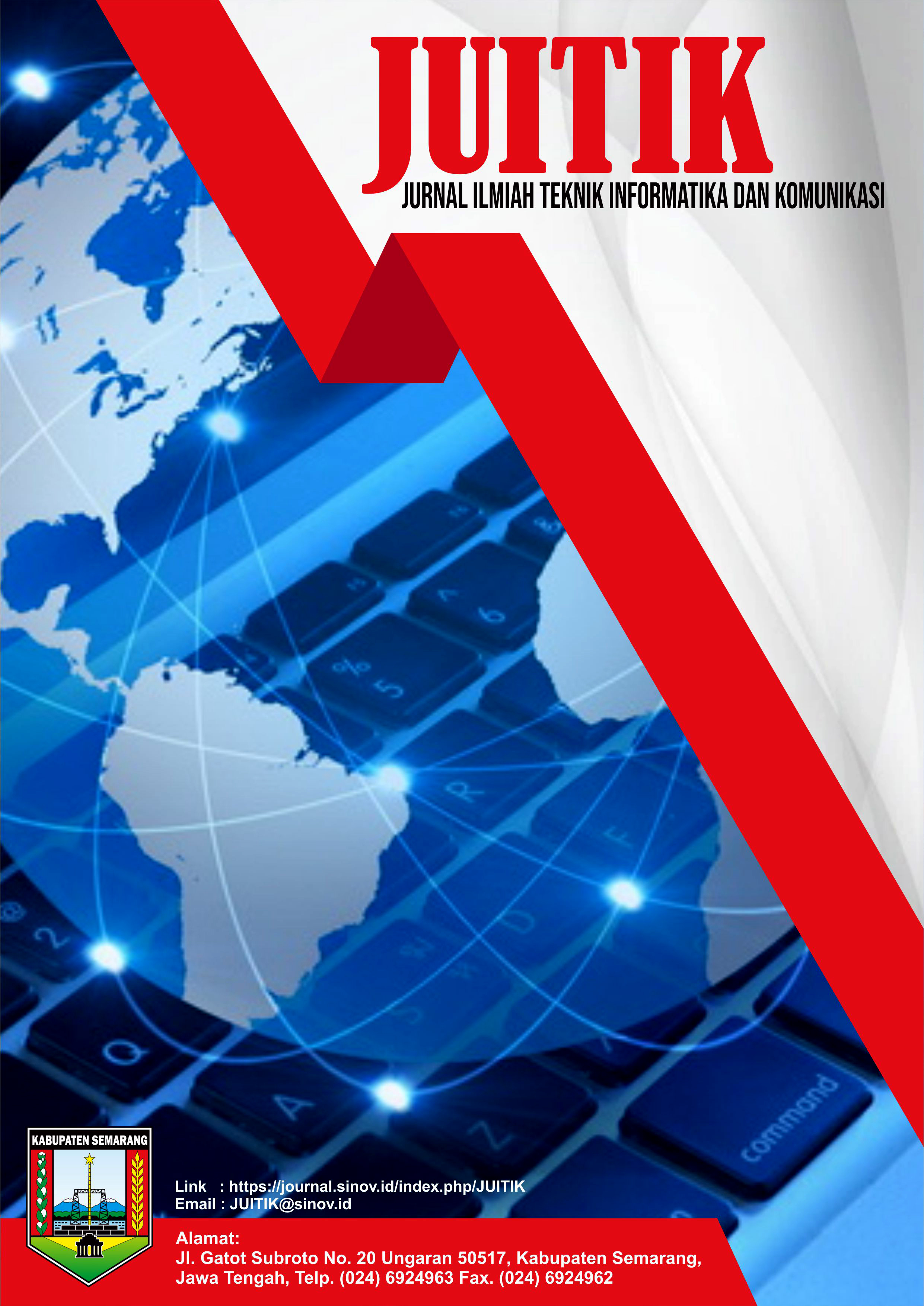Prediksi Risiko Obesitas Remaja Mengacu pada Konsumsi dan Olahraga Dengan Random Forest
DOI:
https://doi.org/10.55606/juitik.v5i2.1250Keywords:
Obesity, Lifestyle, Risk, Prediction, Random ForestAbstract
Teenager’s obesity is public health issue that needs attention because of the increasing risk of other diseases such as diabetes. This study purposes to build a system that can predict the risk of teenager’s obesity. The data is in the form of a secondary dataset that has 17 features that include eating habits, physical activity, and others. Random Forest is used because of its ability to handle high-dimensional data and produce accurate classifications. This system is console-based, where users can add their lifestyle data and get results in the form of obesity predictions with low, medium, and high levels. The results of the model evaluation show very good results, which 90% accurate and high consistency, recall, and f1-score values. This method shows stable and competitive performance compared to other algorithms such as Decision Tree and KNN. So the results are expected to be used as a learning and prevention tool to detect the risk of obesity in adolescents early on.
References
(n.d.). Introduction of Random Forest Classifier to ZigBee Device Network Security. Retrieved June 14, 2025, JSTOR database.
Alpiansah, A. B., & Ramdhani, Y. (2023). Optimasi fitur dengan forward selection pada estimasi tingkat obesitas menggunakan Random Forest. Sistemasi: Jurnal Sistem Informasi, 12(3), 860–873.
Badan Kebijakan Kesehatan Kementerian Kesehatan RI. (n.d.). Laporan hasil survei.
GeeksforGeeks. (2024, February 15). What are the advantages and disadvantages of Random Forest?. GeeksforGeeks. June 14, 2025
Global Observatory for Physical Activity. (n.d.). Country cards.
Hafid, W., & Hanafi, S. (2019). Hubungan aktivitas fisik dan konsumsi fast food dengan kejadian obesitas pada remaja. Kampurui Jurnal Kesehatan Masyarakat, 1(1), 6–10.
Journal of Medical Systems. (n.d.). Journal of Medical Systems. June 14, 2025
Jurnal Akuntansi dan Keuangan. (n.d.). Jurnal Akuntansi dan Keuangan. 14 Juni 2025.
Kurdanti, W., Suryani, I., Syamsiatun, N. H., Siwi, L. P., Adityanti, M. M., Mustikaningsih, D., & Sholihah, K. I. (2015). Faktor-faktor yang mempengaruhi kejadian obesitas pada remaja. Jurnal Gizi Klinik Indonesia, 11(4), 179–190.
Muchlinski, D., Siroky, D., He, J., & Kocher, M. (2016). Comparing random forest with logistic regression for predicting class imbalanced civil war onset data. Political Analysis, 24(1), 87–103.
Rifaldi, A., Anang, L., & Satrio, I. D. (2022). Implementasi algoritma k-nearest neighbor (KNN), Random Forest, Naive Bayes dan Decision Tree untuk mengklasifikasikan tingkat obesitas. RG Journal of Applied Science, 2(2).
Salam, A. (2010). Faktor risiko kejadian obesitas pada remaja [Undergraduate thesis, Universitas Hasanuddin].Siloam Hospitals. (n.d.). Apa itu obesitas? Siloam Hospitals.
Scornet, E., Biau, G., & Vert, J.-P. (2015). Consistency of random forests. The Annals of Statistics, 43(4), 1716–1741.
Scornet, E., Biau, G., & Vert, J.-P. (2015). Consistency of random forests. The Annals of Statistics, 43(4), 1716–1741.
Shi, T., & Horvath, S. (2006). Unsupervised learning with random forest predictors. Journal of Computational and Graphical Statistics, 15(1), 118–138. doi:10.1198/106186006X94072
UNICEF Indonesia. (2022). Analisis lanskap kelebihan berat badan dan obesitas di Indonesia. United Nations Children’s Fund.
Universitas Sumatera Utara. (2022). Faktor-faktor yang berhubungan dengan obesitas pada remaja di SMA Negeri 5 Medan Tahun 2022 [Undergraduate thesis, Universitas Sumatera Utara]. Repositori USU.
World Health Organization. (2023). Obesity and overweight.
Downloads
Published
How to Cite
Issue
Section
License
Copyright (c) 2025 Jurnal Ilmiah Teknik Informatika dan Komunikasi

This work is licensed under a Creative Commons Attribution-ShareAlike 4.0 International License.










